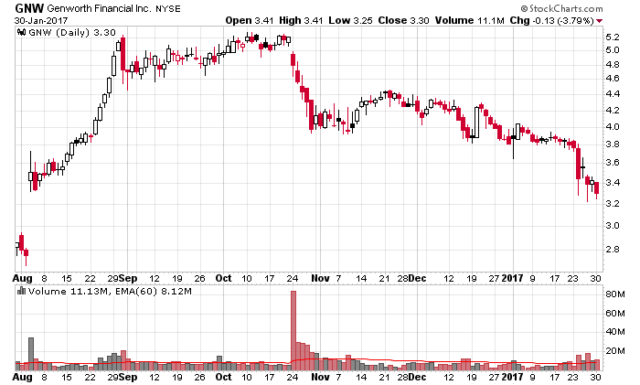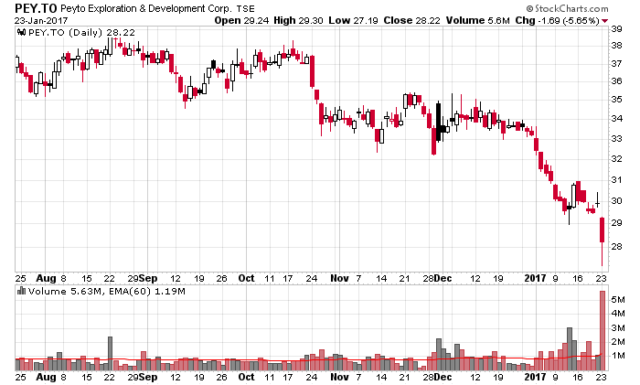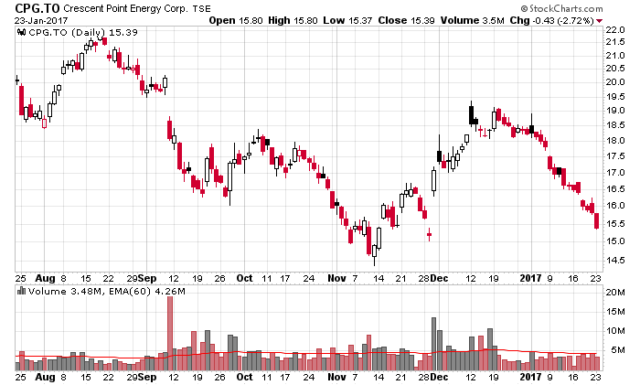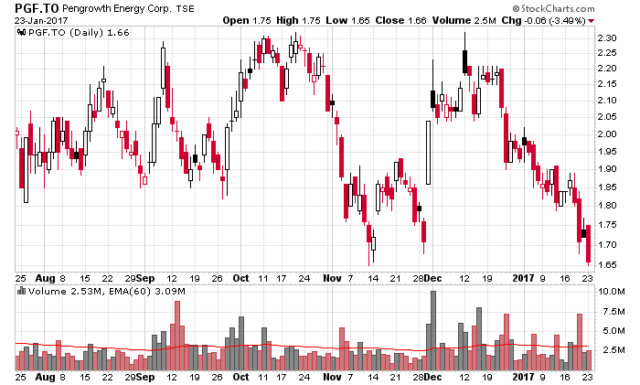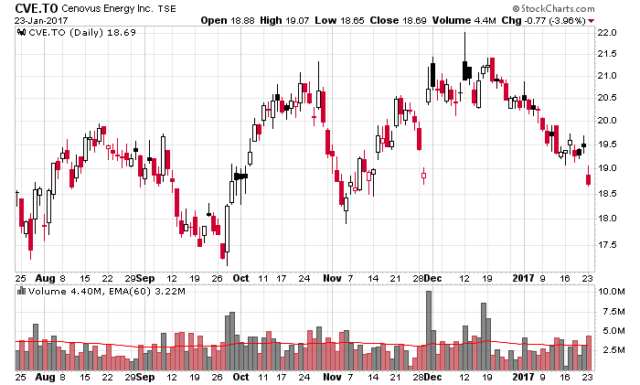Genworth MI (TSX: MIC) reported their fourth quarter a couple weeks ago. This post is a little late in the game (and irritatingly, a conference call transcript has not been made available and I have had to suffer the indignity of actually listening to the conference call). By virtue of the Canadian housing market not imploding over the quarter, the company likely exceeded market expectations, which registered a 10% price spike since their announcement.
Here are some of my takeaways:
* Loss ratio is exceptionally low, at 18% for the quarter. Management projects 25-35% for 2017 as they identified that Fort McMurray and Quebec were abnormally low in Q4-2016 and that a more normalized loss ratio is to be expected in BC and Ontario (which have been quite dormant in terms of mortgage defaults).
* Book value is up a little bit to $39.28, which is $2.46 more than the previous year. The market value continues to converge to book.
* Premiums written, Q4-2015 to Q4-2016, was down about 20%. Portfolio insurance is down as expected per the rule changes, and transactional insurance is down due to the changes in the mortgage rules. The new capital requirements and new premium changes will kick in at the end of March which will offset reduced volume with price increases.
* Investment portfolio continues to be managed in line with previous quarters, in addition to the losses incurred by the preferred share portfolio seemingly normalizing (and if rates continue to rise, discounted rate-reset shares should fare quite well in that environment).
* Regulatory ceiling for private mortgage insurance was raised from $300 billion to $350 billion, which makes this a non-factor for the next while (a low risk that did not materialize).
* New capital requirements result in a “recalibration” of the minimum capital test ratio. The company is internally targeting 160-165%, and each percentage point is about $25 million in capital. Once they head over 165% then the surplus will likely be distributed via buybacks or dividends – it does not look like anything special is going to happen on this front in 2017 as they will be using retained earnings in order to buffer the capital levels. The new OFSI regulations have grandfathering components with respect to the capital requirements which should mathematically ease in the new capital requirements (especially with the evaluation and testing of the mortgage books acquired 2016 and earlier), but the MCT ratio is not likely to materially climb higher to the point where one can start thinking of extra dividends or buybacks.
* Insiders have exercised options and dumped stock after the earnings release, which is a negative signal.
I will warn readers that I have also lightened my own position in Genworth MI in the days ahead (i.e. after they announced) of the earnings announcement, my first sale since the second half of 2015. The last quarter was undoubtedly a good one for the company. I still have a large position in the stock, but I was reducing my position strictly for reasons that it had gotten too concentrated and I want to reduce my overall portfolio leverage. There is still a lot of runway for Genworth MI to run up to the low 40’s as they have everything going correct for them fundamentally and are generating a lot of cash in a semi-protected business environment. The whole country has been so bearish on Canadian housing that they forget to realize there are considerable pockets of profitability and Genworth MI is one of the spaces where there is money that continues to be made – I am guessing that the short sellers have gotten killed on this one.

